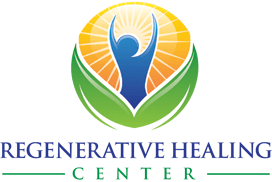In prior issues, I have discussed prolotherapy and how it helps with musculoskeletal pain. Today, I will briefly summarize how prolotherapy works and then focus on how prolo helps shoulder pain. Prolotherapy is a natural treatment that strengthens ligaments, tendons and cartilage. This is achieved by a solution that stimulates a reaction in the body that leads to the growth of collagen, which is the building block of ligaments and tendons. The beautiful part of prolo is that the injury is treated by strengthening tissue. This stands in contrast to traditional treatments such as steroid injections, which can potentially degrade tissue. Physical therapy is effective for building and stretching muscle but does not strengthen the ligaments and does not heal a tendon injury. Prolo is effective for tendonitis such as rotator cuff and tennis elbow, sprains such as ankle and wrists, and arthritic joints such as knees, hips and shoulders. There are multiple studies that have shown that prolo works! These include randomized double-blind studies. Without getting too technical this type of study is the gold standard of medical research.
The shoulder is the most mobile joint in the body. It can move in multiple directions to help us grab anything within reach. When functioning well, the shoulder muscles can support the full weight of the body, such as with a pull up. The main group of muscles in the shoulder are called the rotator cuff. These are 4 muscles whose tendon wrap around the humerus (arm bone) like a cuff, hence its name. These muscles have 2 main functions – 1. They help move the shoulder, especially with rotation as the name implies and 2. They help stabilize the shoulder when the arm is raised above shoulder height. That is, they keep the humerus in place with movement.
The other structures that keep the shoulder in place and stabilized are the ligaments. The ligaments around the shoulder joint form a capsule that envelops the joint. When these ligaments loosen and the capsule weakens, the shoulder is not held in place well during all those movements. As noted above, the rotator cuff muscles also hold the shoulder in place so when the ligaments are not doing their share to stabilize the shoulder, the cuff muscles have to work harder. When they have to work harder with all movements, the cuff muscles start to fatigue, and then become strained. This results in a rotator cuff strain. If this is not treated effectively, this can progress to a partial tear where some of the muscle/tendon fibers are torn and even a full tear when all of the fibers are torn.
Fortunately, prolotherapy is a great treatment for rotator cuff strains and rotator cuff tears. Prolotherapy is ideally suited to treat ligaments and tendons and both get treated when the rotator cuff is affected. By treating the ligaments, the capsule is strengthened. That results in long-term improvement because the rotator cuff muscles then don’t have to work as hard to keep the shoulder in place. Also, the rotator cuff tendons are also treated further stabilizing the rotator cuff muscles. (Tendons are the part of the muscles that attaches to the bone. They are whitish-yellow because they don’t get much blood flow. Prolotherapy helps stimulate blood flow to these tendons to help them get stronger and heal.) The key point is that rotator cuff tendonitis and partial tears are treated with long term success with prolotherapy by strengthening the cuff tendons and shoulder ligaments.
Another great target for prolotherapy is shoulder arthritis. There are 2 main joints in the shoulder, the glenohumeral joint and the acromioclavicular (AC) joint. The glenohumeral joint is a ball-and-socket that needs to be stabilized by strong ligaments. When those ligaments weaken, the bones develop bone spurs, which is a sign of arthritis (As a rule of thumb, when you see bone spurs, there are most likely loose ligaments that lead to those bone spurs. When you see bone spurs, think prolotherapy). The bone spurs are there as a reaction to the stress on the joint. The joint is stressed because the ligaments are lax. Prolotherapy strengthens the ligaments so the joint capsule will now hold the joint in place. The bone spurs may not go away but there will be a lot less pain when the joint is stabilized with prolotherapy.
The AC joint is a small joint that connects the collarbone and shoulder blade. The joint is vulnerable to trauma such as in motor vehicle accidents and sports injuries. These injuries will cause the joint capsule to weaken, eventually leading to arthritis. The pain occurs with moving the arm across the chest and with carrying items such as a suitcase that pull the arm down. The AC joint responds beautifully to prolotherapy. By strengthening the AC capsule with prolotherapy, the pain resolves.
Another problem that is ideally suited for prolotherapy is shoulder bursitis. A bursa is under a tendon and is usually a negligible structure. When the tendon becomes irritated as it rubs over the bone, the bursa becomes irritated, which leads to swelling of the bursa with pain. By strengthening the tendon with prolotherapy, this will quickly relieve the pain and the bursa swelling subsides. Also, by strengthening the capsule, this stabilizes the shoulder so stress is taken off the tendon and bursa, so the relief is long-term.
In summary, shoulder pain develops because the ligaments weaken which puts stress on the rotator cuff tendons and the shoulder joint. By strengthening the ligaments, prolotherapy helps stabilize the joint which relieves the stress on the rotator cuff and shoulder joint. This relieves the pain and strengthens the shoulder joint. Prolotherapy for shoulder pain provides short-term relief by treating the source of pain and long-term relief by stabilizing the shoulder and reducing the stress on the tendons and shoulder joint.
